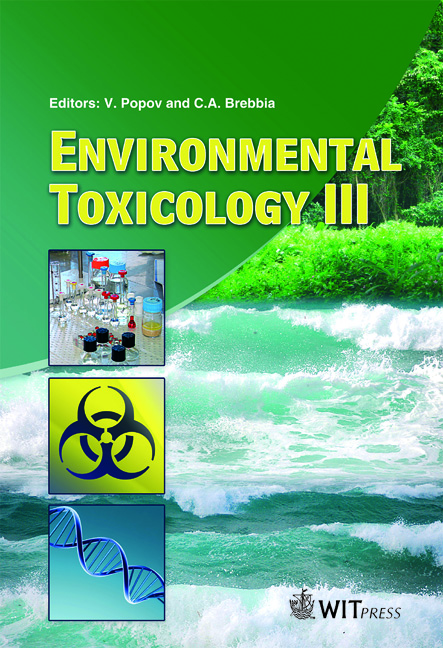The Possibility Of Removal Of Endocrine Disrupters From Paper Mill Waste Waters Using Anaerobic And Aerobic Biological Treatment, Membrane Bioreactor, Ultra-filtration, Reverse Osmosis And Advanced Oxidation Processes
Price
Free (open access)
Transaction
Volume
132
Pages
12
Page Range
33 - 44
Published
2010
Size
669 kb
Paper DOI
10.2495/ETOX100041
Copyright
WIT Press
Author(s)
D. Balabanič, D. Hermosilla, A. Blanco, N. Merayo & A. Krivograd Klemenčič
Abstract
An endocrine disrupter is an exogenous agent that interferes with the synthesis, binding, secretion, transport, action or elimination of natural hormones in the body that are responsible for the maintenance of homeostasis, reproduction, development, and behaviour. Some of them are suspected of causing abnormalities in sperm and increasing hormone-related cancers in humans. Studies have also been published on the estrogen-like responses of endocrine disrupters in wildlife, such as birds, amphibians, reptiles and fish. Endocrine disrupters include a wide variety of pollutants such as alkylphenols, bisphenol A, pesticides, polycyclic aromatic hydrocarbons (PAHs), phthalates, heavy metals, and natural or synthetic hormones. They may be released into the environment in different ways. One of the most important sources of endocrine disrupters are industrial waste waters. The conventional waste water treatment processes are not specifically designed to remove traces of dangerous organic contaminants (except for heavy metals) so the latter are consequently consumed by aquatic organisms and through them may also enter human food chain. In the presented research the following treatments for removing of organic endocrine disrupting
Keywords
endocrine disrupting compounds, anaerobic treatment, aerobic treatment, membrane filtration, advanced oxidation processes, waste water treatment





